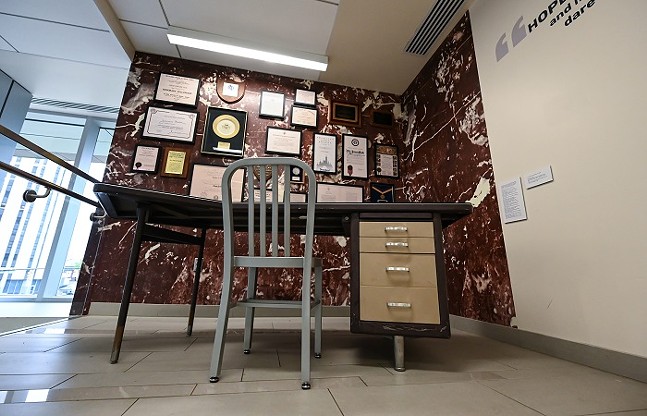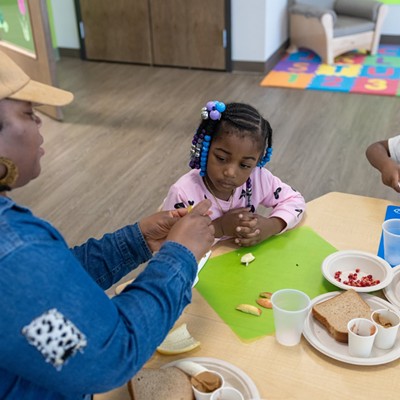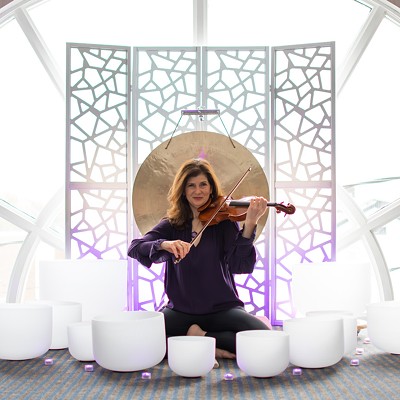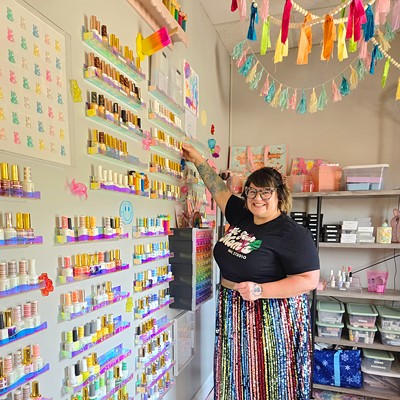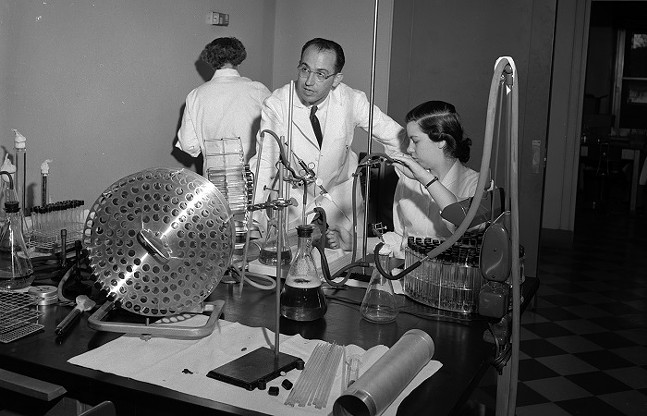
The University of Pittsburgh School of Public Health remembers Salk with an exhibition covering how he and his team developed the life-saving polio vaccine.
Now on view in the ground floor lobby of Pitt's Public Health building, the Jonas Salk Legacy Exhibit contains a number of artifacts related to his legacy and work, including lab equipment, documents, and photographs. The school also placed Salk’s mid-century modern office desk in the Commons area, where it will serve as an interactive exhibit for public health students to study.
The exhibit materials were provided by Pitt's University Library System and by Salk’s sons, Peter, Darrell, and Jonathan. Peter, who, along with his brothers, served as one of the early trial participants for the vaccine in 1953, conceived of the exhibition with Pitt Public Health’s previous dean, Dr. Donald Burke.
The displayed lab equipment and documents from the polio vaccine project had long been sitting in storage near Salk's final home in La Jolla, Calif.
“Opening the boxes was a dream come true,” says Burke. “I was a child when Jonas Salk and his team here at Pitt developed the polio vaccine. I clearly recall the celebration when we were finally free from the fear of polio. Salk became a scientist-hero to my generation, and I’m delighted to bring his legacy back to Pittsburgh where it will inspire future generations of health professionals.”
Peter, who serves as professor of infectious diseases and microbiology at Pitt Public Health and as president of the Jonas Salk Legacy Foundation, says his late father "would be very happy seeing the story told by these items of laboratory equipment, awards, newspapers, and documents that have been so carefully preserved for all these decades, and that have now returned ‘back home’ to Pittsburgh.”

“It was important to us that the exhibit do more than showcase equipment,” says Taylor. “We want the objects to help viewers imagine the urgency that propelled Salk’s lab in the 1950s. By placing the iron lung near the lab equipment, we recall the former Pittsburgh Municipal Hospital where vaccine development progressed on one floor while polio patients were treated with iron lungs on another.”
The exhibit also recognizes the Pittsburgh school children who served as the earliest polio vaccine trial participants, as visitors can view their consent forms and vaccination cards on display. In 1954, national testing began on one million children between the ages 6 to 9, who, according to the Salk Institute website, became known as the Polio Pioneers.
Maureen Lichtveld, the Pitt Public Health dean and Jonas Salk Professor of Population Health, says the school is "honored to celebrate this impactful public health discovery with the city whose residents selflessly rolled up their sleeves to become the first polio vaccine trial participants.”
Jonas Salk Legacy Exhibit. On view weekdays between 9 a.m.-6 p.m. University of Pittsburgh School of Public Health. 130 De Soto St., Oakland. Free and open to the public. sph.pitt.edu/about/history-mission/salk-legacy

